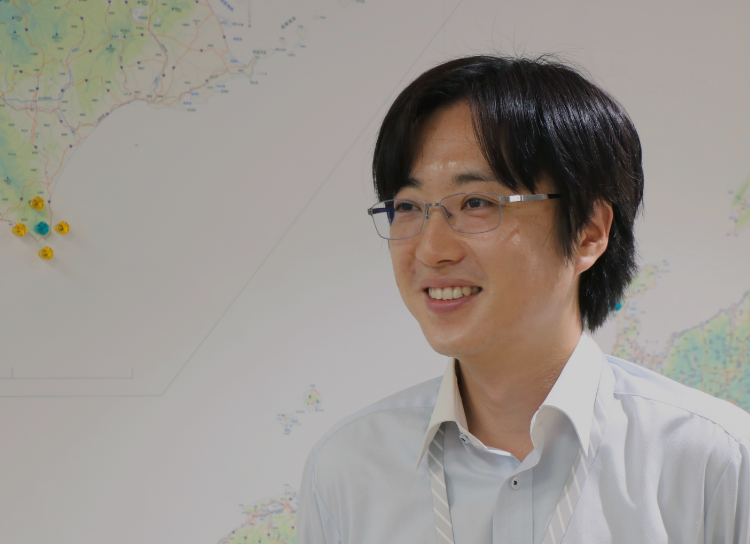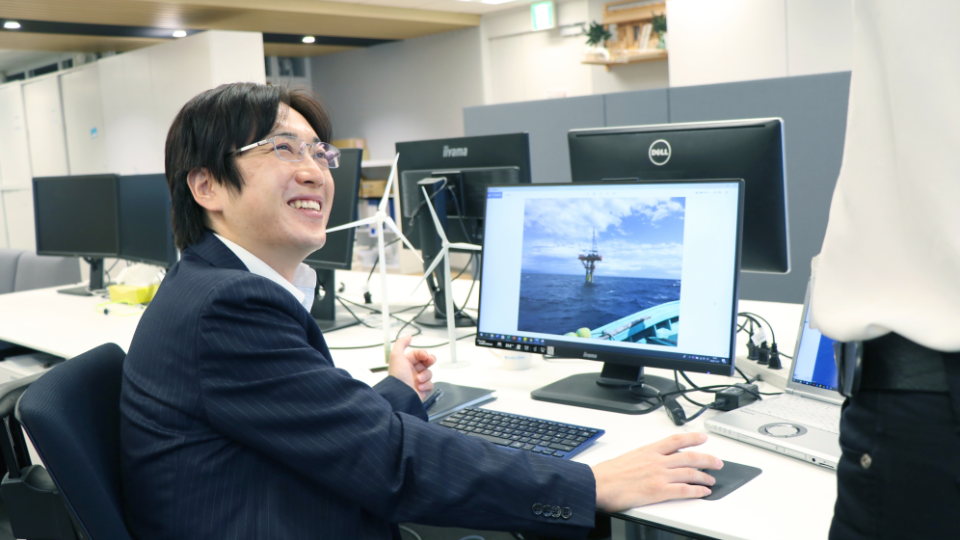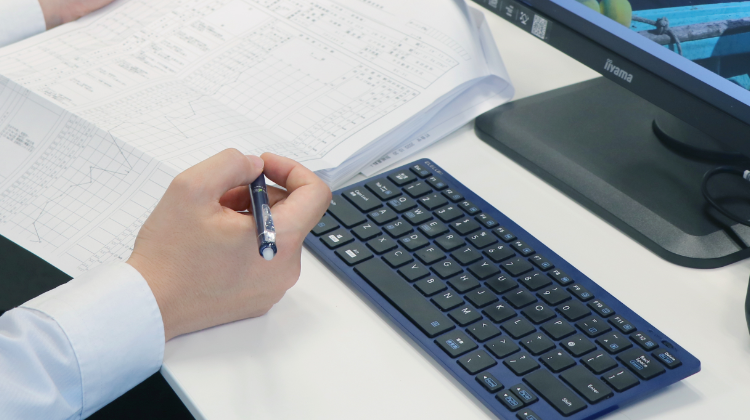Interview
Engineering & Procurement Division
Offshore Wind Engineering Department
Hirohito Nishigaki
Renewable Energy
※ Company names and affiliations in the article are as of the time of publication


Engineering & Procurement Division
Offshore Wind Engineering Department
Hirohito Nishigaki
When a company develops a new offshore wind power plant, it occupies an area of the sea for a long time, so its preparatory investigations involve multiple perspectives. These include the plant’s potential impacts on the environment and on the lives of local residents, its alignment with the wider society including regulatory compliance, its financial viability in terms of profitability and economic benefits, and the technologies required to solve these challenges. I’m currently involved mainly in marine surveys covering aspects such as the geology and topography of the ocean floor, and in technical investigations related to laying undersea cables. From a personal perspective, I’ve loved the sea and ships ever since I was a child, and after majoring in geology at university, my work experience in my previous job included marine surveys and undersea cable-laying. So the work I’m doing now at ENEOS Renewable Energy really feels like my true calling.
The key experience for me was attending an international conference on offshore wind power generation held in Copenhagen in November 2019. The opportunity to share information with a large number of people working in the same field all over the world made it an extremely valuable experience. As you know, Japan’s achievements in offshore wind power generation lag behind those of other countries—particularly countries in Europe. But Japan, as a maritime nation, boasts advanced technological capability and a strong track record in relation to undersea cables, for which it is highly regarded overseas as well. So I want to use these capabilities as a foothold to raise the profile of ENEOS Renewable Energy, and of Japan as a country.
Building structures and laying cables at sea involves complicated procedures including obtaining permits and approvals, and coordinating with local authorities. So I’ve set myself the challenge of obtaining certification as a maritime judicial scrivener, because I thought that would be useful. In terms of work itself, even after the offshore wind power plant I’m currently working on is completed, my goal is to continue ensuring it operates reliably over the years to come, for as long as it remains in service.
Outside of work, I’ve been fascinated by the Japanese tea ceremony ever since I performed an amateur version for some non-Japanese colleagues on board a marine survey vessel in my previous job. I recently set up a tea ceremony club at work, so I’m looking forward to studying the art of tea with my fellow members.

The Japanese government has pledged that Japan will be carbon neutral by 2050. ENEOS Renewable Energy, for its part, genuinely believes in changing the world with renewable energy, and is earnest in its ongoing pursuit of this goal. Our aim is also to maintain a sincere approach to building relationships with local communities and stakeholders. If we fall short, I ask stakeholders to give us candid feedback and support our efforts to improve. Then we can all progress together toward a decarbonized society.

